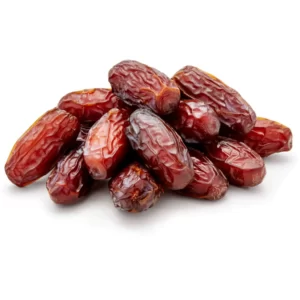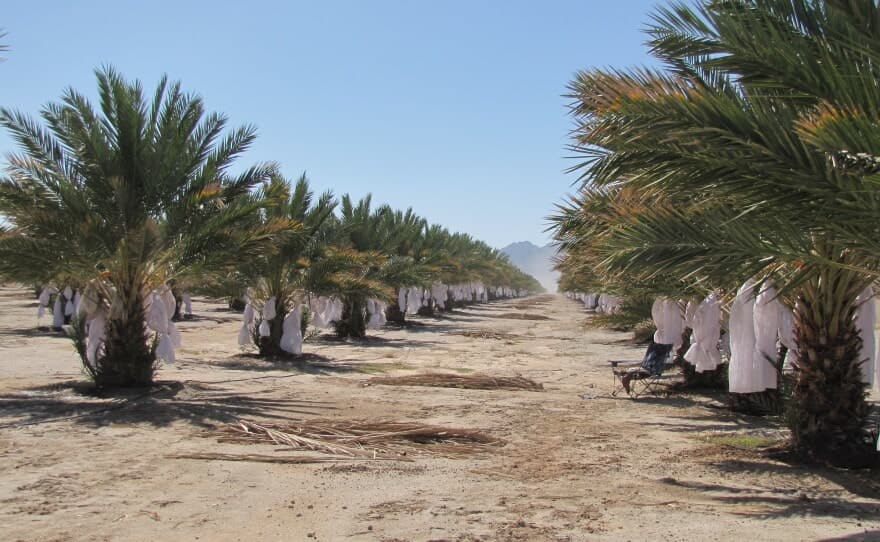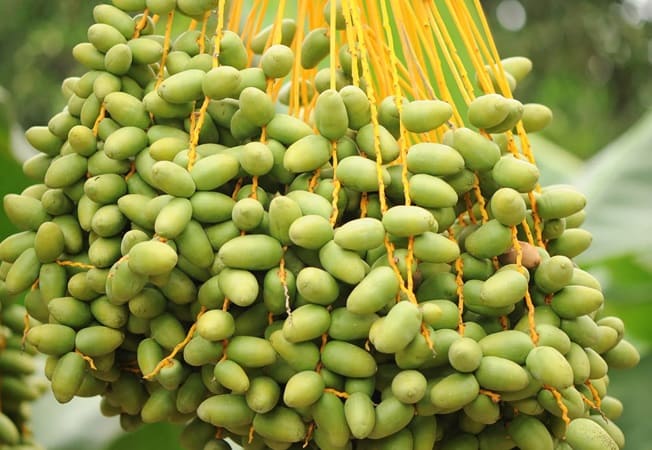Medjool Date Palm, Introduction and Investigation
The Phoenix dactylifera, commonly known as date palm, is a monocotyledonous tree of the Arecaceae family and the Arecales order, typically found in warm climates. Medjool date palm, which enjoys a robust international market and export demand worldwide, is recognized by various names across different countries and languages as below:
English: Medjool، Medjoul، Majhool، Majhūl date
French: Medjoul, Mejhoul
Arabic: مجهول، المجهول، مجدول، تمر المجهول, Majdool
Persian: مجول, Majool

Why Medjool?
The most significant characteristic of this date palm species emerges in its fruit. The Medjool date palm boasts a broad fruit size among various date palm varieties, with reports of fruits reaching up to 7 centimeters in length. An important point to note about this variety is the size of the Medjool fruits. The size of the fruit is not the same in all trees. Consequently, in the fruit market, Medjool dates are categorized into “Jumbo Medjool” and “Super Jumbo Medjool” based on size.
However, genetically speaking, only one type of Medjool date is recognized. The difference in the Medjool fruit size is attached to factors such as tree potential, orchard management, fertilization, plant nutrition, soil texture and structure, climate, and, in particular, the irrigation system. The desirable sweetness of Medjool fruits further contributes to the market preference and high demand for this tropical fruit compared to other date varieties.
History of the Medjool Date
The primary origin of the Medjool date palm is Morocco. This variety of date palms has been present in North Africa for thousands of years, and due to the large size of its fruits and their marketability, cultivation, trade, and consumption of Medjool dates have flourished in Iran and globally in recent years.

Geographical Distribution of Medjool Date Palm
In addition to Morocco, which is the origin of Majol, Egypt, Algeria, Saudi Arabia, Israel, Iran, Iraq, the United Arab Emirates, Jordan, South Africa, and Palestine also have success in planting Medjool date palm and producing its fruit.
Production of Medjool Dates (Medjool Date Palm Seedlings)
Tissue culture propagation, meaning saplings produced through plant tissue culture, is currently the predominant method for supplying Medjool date palms worldwide. High genetic purity, free from contamination and disease, robust root structure, and a high survival percentage (over 95%) are the primary reasons why date palm growers worldwide resort to purchasing and planting tissue-cultured Medjool date palms.

In addition to tissue culture propagation, offshoots are also feasible for Medjool date palm propagation. Offshoots, traditionally separated from the mother tree, constitute another means of supplying the required seedlings for date palm plantations. However, limitations such as limited availability of plant-able offshoots, lack of roots, high risk of mortality (50%), and contamination with diseases from the mother tree and plantations restrict the use of offshoots for cultivation.
Price and Market of Medjool Dates
On international markets, the average price for a kilogram of Medjool dates is approximately $25, although factors such as the size, sorting, type, and quality of packaging also influence this price. In Middle Eastern markets, this price tends to be slightly lower, ranging from $13 to $23.

Conditions and Packaging of Medjool Dates
As mentioned earlier, The Medjool dates are produced by various countries. Competition to gain market share for this specific type of date depends on several important factors, some of the most significant of which include:
Size: Larger-sized dates are more marketable and fetch higher prices.
Flesh-to-pit ratio: Another lead factor is the ratio of flesh to pit in the date. Dates with a lower ratio of pit volume to flesh tend to command higher prices.
Color: Medjool dates with a black to brown color are ideal. Lighter colors, such as yellowish or lighter shades of brown, are less preferred in the market.

